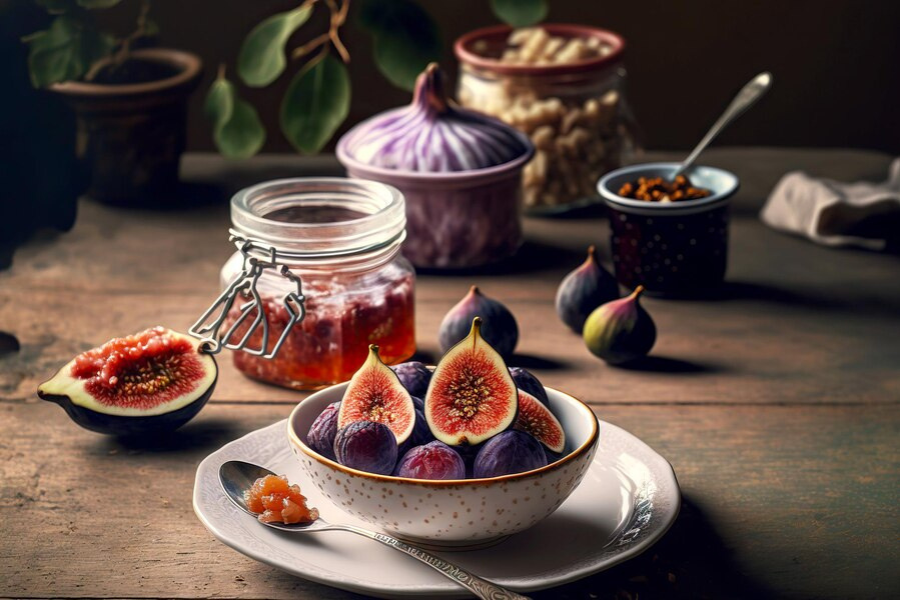The Figù fruit, sometimes considered a variation of the fig, is known for its intriguing flavor, nutritious profile, and versatility in cooking. Native to Mediterranean and subtropical regions, Figù has a distinctive taste and texture that has earned it a special place in the culinary traditions of many cultures. With its rich historical significance and nutritional value, Figù is worth exploring—whether for its health benefits, unique culinary uses, or even for growing in your own backyard. Let’s delve into everything Figù has to offer, from its historical roots to modern uses.
Understanding Figù
What is Figù? Figù, often mistaken for a variety of fig or even a close relative of certain fig types, is unique in both flavor and texture. This small fruit boasts a green exterior, a succulent, slightly sweet pulp, and a unique texture that can range from creamy to grainy. While some might confuse it with figs due to its similarities, Figù stands out as a distinct species celebrated in various cultures, particularly in Mediterranean and Middle Eastern regions.
The Origins of Figù Native to regions with warm climates, Figù has been cultivated for centuries. Ancient civilizations, particularly in areas of the Mediterranean and North Africa, revered the fruit not only as a food source but also for its medicinal properties. Due to its resilience and adaptability, Figù became widely popular and was eventually embraced by cultures across the globe.
Health Benefits of Figù
Nutritional Powerhouse Figù is packed with essential nutrients, including fiber, potassium, magnesium, and vitamins A and C. This unique combination of nutrients contributes to its various health benefits, from supporting digestive health to promoting heart wellness.
Digestive Health Rich in dietary fiber, Figù promotes digestive health by supporting regular bowel movements and maintaining a healthy gut environment. Fiber also aids in the absorption of nutrients and helps prevent issues like constipation and bloating.
Immune System Support With a significant amount of vitamin C, Figù is excellent for boosting the immune system. Vitamin C acts as an antioxidant, protecting cells from oxidative stress, which is crucial for immune defense and overall health.
Heart Health Figù contains a high amount of potassium and magnesium, two minerals essential for maintaining blood pressure and reducing strain on the cardiovascular system. Regular consumption of Figù may contribute to a healthier heart by managing blood pressure and improving blood circulation.
Antioxidant Properties The antioxidants in Figù, such as polyphenols, help combat free radicals in the body, reducing the risk of chronic diseases and slowing down aging processes. Antioxidants are known for their role in protecting cells and reducing inflammation, further enhancing Figù’s status as a beneficial addition to a balanced diet.
Culinary Uses of Figù
Traditional Figù Dishes In regions where Figù grows abundantly, it has become a staple ingredient in many traditional dishes. From salads to desserts, Figù adds a distinct sweetness and a slightly nutty flavor that enhances various recipes.
- Figù Salad: Figù pairs beautifully with arugula, feta, and walnuts, creating a salad that balances sweet, savory, and tangy flavors. A drizzle of balsamic glaze complements the fruit’s natural taste, making for a refreshing dish.
- Stuffed Figù: In Mediterranean cuisine, Figù is often hollowed out and stuffed with nuts, cheese, and honey. This dish is not only visually appealing but also highlights Figù’s ability to pair with both savory and sweet ingredients.
- Figù Tart: Using Figù in desserts like tarts brings out its natural sweetness and pairs well with almond or vanilla-based fillings. Baked with a flaky crust, Figù tart is a popular dessert choice during harvest season.
Modern Figù Recipes As Figù gains popularity worldwide, chefs and home cooks alike are exploring new ways to incorporate it into contemporary dishes. Some innovative uses of Figù include:
- Figù Smoothies: Blending Figù with yogurt, honey, and a handful of berries results in a nutritious smoothie packed with antioxidants and fiber.
- Figù Chutney: A twist on the traditional chutney, Figù chutney pairs well with cheeses, meats, and even vegetarian dishes, offering a rich, tangy flavor.
- Grilled Figù: Grilling Figù caramelizes its sugars, making it an excellent side dish for savory items or as a topping for ice cream.
Growing Figù at Home
Ideal Growing Conditions Figù thrives in warm, temperate climates, making it an ideal choice for gardeners in regions with mild winters and long, sunny summers. It requires well-drained soil, ideally with a neutral to slightly acidic pH, to grow healthily. In regions with colder winters, Figù can be grown in containers and brought indoors when temperatures drop.
Planting and Maintenance Tips When planting Figù, ensure the site receives ample sunlight and is shielded from harsh winds. Proper watering is crucial—while Figù is drought-resistant to some extent, regular watering encourages optimal fruit development. Mulching around the base helps retain moisture and keeps the root system healthy.
Harvesting Figù The fruit is typically harvested when fully ripe, as it continues to ripen only slightly after picking. To ensure the best taste, look for a slight give when gently pressing on the fruit. Harvest season generally varies by region but is commonly late summer through early autumn.
Figù in Traditional Medicine
A Historical Remedy Figù has been used in traditional medicine for centuries, with remedies ranging from digestion aids to skin treatments. Its naturally high fiber content and unique combination of vitamins and minerals made it a common recommendation in ancient healing practices.
Modern Health Applications Today, Figù is valued for its role in maintaining a balanced diet and promoting wellness. Its properties are frequently studied in modern nutrition science, with findings suggesting benefits for everything from metabolic health to improved cognitive function.
FAQs
What are the main health benefits of Figù?
Figù supports digestion, boosts immunity, and promotes heart health due to its fiber, vitamins, and mineral content.
How can I incorporate Figù into my diet?
Figù can be enjoyed fresh, in salads, smoothies, or as a component in both savory and sweet dishes.
Is Figù suitable for people with dietary restrictions?
Yes, Figù is gluten-free, low in calories, and suitable for most diets, including vegan and paleo.
When is the best time to harvest Figù?
The best time is typically late summer to early autumn when the fruit has softened slightly but is still firm enough to handle.
Can I grow Figù in a colder climate?
Yes, Figù can be grown in containers and brought indoors during winter, making it suitable for colder climates.
What nutrients are found in Figù?
Figù is rich in fiber, vitamin C, potassium, magnesium, and antioxidants, making it a nutritious addition to any diet.
Conclusion
From its rich cultural heritage to its many health benefits and culinary uses, Figù is a remarkable fruit that has earned its place in both ancient traditions and modern kitchens. Whether you’re growing Figù in your garden, experimenting with Figù in recipes, or simply enjoying its natural flavors, this unique fruit offers a delicious and nutritious way to enhance your well-being.



